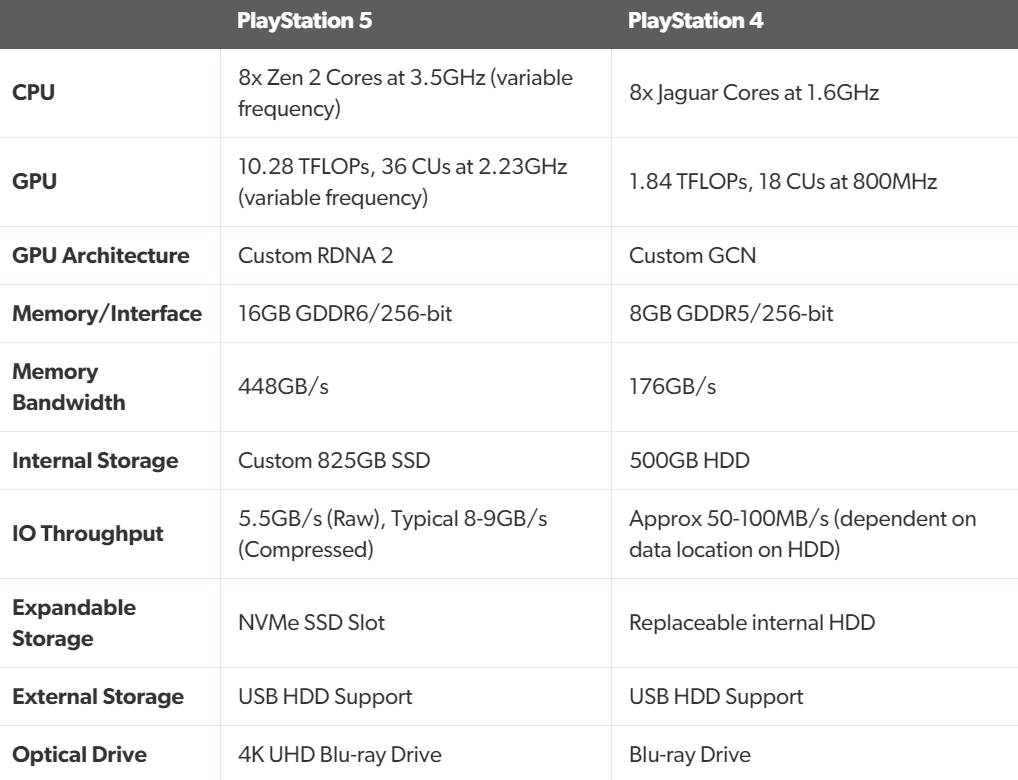Sony PlayStation 5: Full Specs and Details Released
The new gaming console has a far more powerful graphics processor, a 3D audio engine, and more upgrades.

The Sony PlayStation 5’s full specs were revealed by system architect Mark Cerny during an online event in lieu of the Game Developers Conference, which was canceled due to Coronavirus concerns. Watch it below:
As Cerny previously revealed in a Wired article, the next-gen console boasts a CPU based on AMD’s Ryzen line, a solid-state drive that eliminates need for data duplication, and haptic feedback-enabled controllers with adaptive triggers that adjust tension based on what’s happening in-game.
Newsweek notes that the PS5 also gets a 10.28-teraflop Graphics Processing Unit (GPU) that’s nearly six times more powerful than PS4’s 1.84-teraflop GPU, as well as support for 8K graphics, backwards compatibility with PS4 titles, and VR support.

Eurogamer compiled a chart that shows all key PS5 hardware upgrades over the outgoing system. The tech site also spoke at length with Cerny prior to the presser—here are some takeaways about its CPU, GPU, SSD and Tempest 3D audio engine based on their report:
PlayStation 5 uses AMD’s excellent Zen 2 CPU technology with prior communications confirming eight physical cores and 16 threads – but now we know how fast they are clocked, with PS5 delivering frequencies up to 3.5GHz.
Discussing the nature of CPU and GPU clock speeds is going to require some careful explanation because Cerny actually described frequencies as being ‘capped’. For the CPU, 3.5GHz is at the top end of the spectrum, and he also suggests that this is the typical speed – but under certain conditions, it can run slower.
Sony is doubling down on solid-state storage in providing a truly transformative next generation experience. Every couple of years, Mark Cerny travels the world, meeting dozens of developers and publishers and the integration of the SSD was the number one next-gen request. Sony’s actual implementation is something else, with performance rated at two orders of magnitude faster than PlayStation 4. 2GB of data can be loaded in one quarter of a second, meaning that in theory, the entirety of PS5’s 16GB can be filled in just two seconds.
In short, the Tempest Engine opens the door to a genuine revolution in game audio – and while there are challenges ahead in seeing the system reach is fullest potential, one thing you don’t need to worry about is buying into high-end audio hardware to enjoy the experience.In the short term, the simple solution will be to use headphones: two ears, two speakers – it’s all you need and the Tempest Engine will handle the rest. Going forward, Sony is optimistic about great results from virtual surround from TV speakers and sound bars, with multi-speaker systems also due for support.
No price, release date or images of the finished console were announced, but it’s still due out in 2020.
